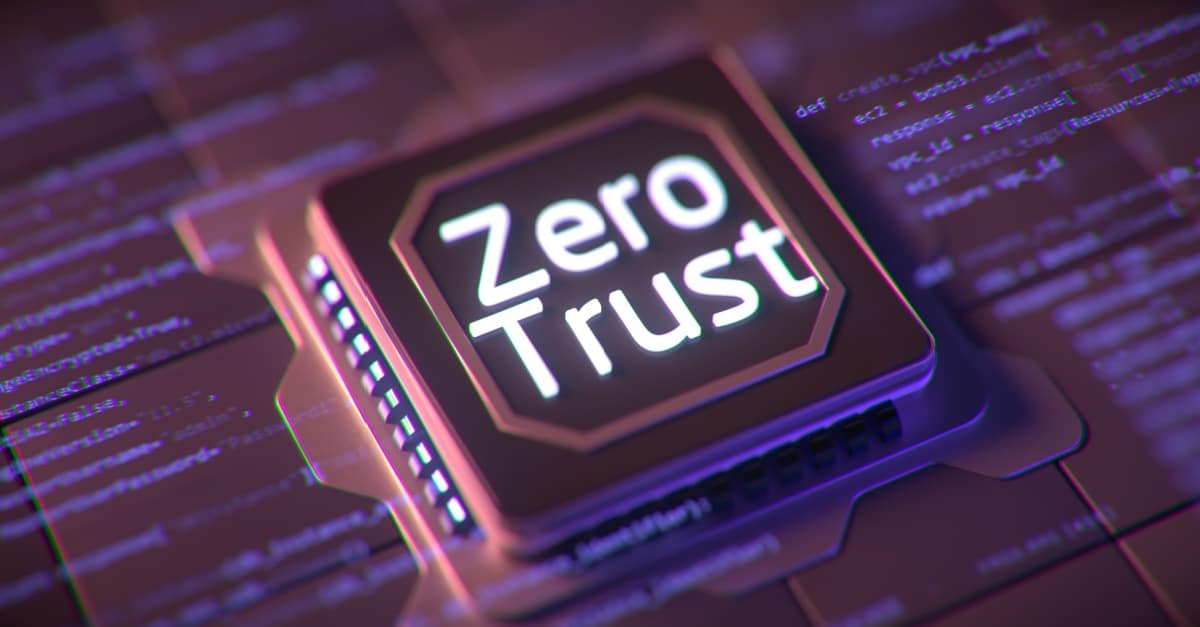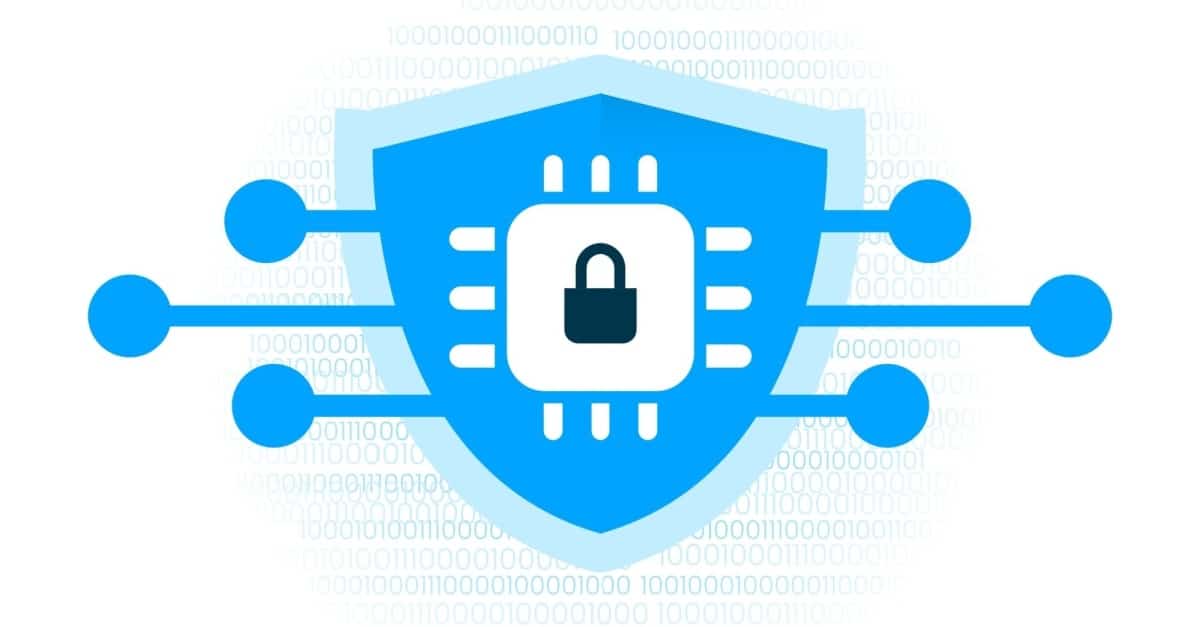What Is a Zero Trust Architecture?
Zero trust architecture (ZTA) is a security framework that operates on the principle of “never trust, always verify.” It eliminates implicit trust in users, devices, and networks, even if they are already inside the corporate network. Instead, ZTA requires continuous verification and authentication for every access request, regardless of location or prior access, to minimize the attack surface and prevent lateral movement of threats.
This is part of a series of articles about Zero Trust.
These are the key principles of zero trust:
- Never trust, always verify: Every user, device, and application must be authenticated and authorized before accessing resources, regardless of their location or past access.
- Least privilege access: Users and systems are granted only the minimum necessary permissions to perform their tasks, limiting potential damage from compromised accounts.
- Monitoring and threat detection: ZTA emphasizes real-time monitoring and analysis of network traffic and user behavior to detect and respond to threats.
- Continuous monitoring and validation: Trust is reassessed continuously by monitoring user behavior, device posture, and network activity to detect anomalies and enforce dynamic security policies.
- Device and user authentication: Access decisions are based on verifying both the user’s identity and the security posture of their device to ensure only trusted entities can reach sensitive resources.
- Assume breach: Zero trust operates under the assumption that attackers may already be inside the network and prioritizes containment, detection, and rapid response to minimize damage.
Here are the main technical components of a zero trust architecture:
- Identity and access management (IAM): ZTA relies heavily on strong IAM solutions to verify identities and control access to resources.
- Multi-factor authentication (MFA): Multiple forms of authentication (e.g., passwords, biometrics, one-time codes) are used to verify user identities.
- Microsegmentation: The network is divided into smaller segments, and access is controlled between these segments based on strict policies, limiting the potential spread of malware or unauthorized access.
- End-to-end encryption: Data is encrypted both in transit and at rest to protect it from unauthorized access.
- Real-time monitoring and threat intelligence: ZTA uses advanced monitoring and threat intelligence to identify and respond to potential threats in real time.
- Policy engine and enforcement points: The policy engine makes access decisions based on predefined rules and risk assessments, while enforcement points apply these decisions across networks, applications, and endpoints.
- Automation and orchestration: Automated workflows and orchestration tools enforce security policies, respond to threats in real time, and reduce the operational burden on security teams.
In this article:
- The Shortcomings of Traditional Security Architectures
- The Benefits of Zero Trust Architecture
- Key Principles of Zero Trust
- Essential Components of Zero Trust Architecture
- Zero Trust Architecture Example
- Best Practices for Designing a Successful Zero Trust Architecture
The Shortcomings of Traditional Security Architectures
Traditional network security models operate on the assumption that anything inside the organization’s perimeter can be trusted. Once a user or device gains access to the internal network, lateral movement is often unrestricted. This perimeter-based model, often described as “trust but verify,” creates vulnerabilities that attackers can exploit once they breach the perimeter.
One major limitation is the lack of granular access control. Employees and devices frequently receive broad access privileges that exceed what is necessary for their roles, increasing the potential impact of a compromise. Additionally, legacy systems often lack sufficient identity verification and monitoring, allowing threats to persist undetected within the network.
These architectures also struggle to support modern IT environments. With the rise of cloud computing, remote work, and bring-your-own-device (BYOD) policies, the concept of a clearly defined network perimeter has become obsolete. Traditional security tools are ill-equipped to enforce consistent policies across distributed infrastructure and diverse endpoints.
As a result, organizations relying solely on perimeter-based defenses face elevated risks of data breaches, insider threats, and unauthorized access. This has driven the shift toward zero trust architecture, which mitigates these risks through continuous verification and strict access controls.
The Benefits of Zero Trust Architecture
Zero trust architecture offers a modern approach to security that aligns with today’s distributed and dynamic IT environments. By removing implicit trust and enforcing continuous verification, it helps organizations protect critical assets more effectively. Key benefits include:
- Reduced attack surface: Limits access to only what is necessary, reducing potential entry points for attackers.
- Minimized lateral movement: Prevents unauthorized movement within the network by segmenting resources and verifying access at each step.
- Improved security posture: Provides granular insight into user activity, devices, and network traffic for better monitoring and response.
- Support for remote work: Enables secure access for remote workers and cloud-based resources without relying on traditional VPNs or perimeter defenses.
- Simplified compliance: Supports enforcement of access policies and logging, which support regulatory and audit requirements.
- Resilience against insider threats: Enforces least privilege and continuous validation, reducing the impact of compromised credentials or insider abuse.
Key Principles of Zero Trust
Zero trust is not a single technology but a strategic approach that applies consistent, adaptive security controls based on several guiding principles. These principles help organizations implement a security model that assumes breach, continuously validates trust, and minimizes access to resources. Understanding these foundational ideas is critical for designing and maintaining an effective zero trust environment:
- Never trust, always verify: Every access request is treated as if it originates from an open network. Users and devices must prove their identity and authorization every time they request access to a resource, regardless of their location.
- Least privilege access: Users are granted the minimum level of access required to perform their duties. This principle limits the potential damage of compromised accounts by reducing access scope and exposure.
- Microsegmentation: Networks are segmented into smaller zones to contain breaches and limit lateral movement. Access between segments requires separate authentication and authorization.
- Continuous monitoring and validation: Trust is not a one-time event. Systems must continuously assess and monitor user behavior, device health, and other contextual data to detect anomalies and enforce policies in real time.
- Device and user authentication: Access decisions consider both the user identity and the device being used. Devices must meet predefined security standards before gaining access to resources.
- Assume breach: Organizations operate with the mindset that a breach has either already occurred or is inevitable. Security strategies are designed to limit damage and ensure rapid detection and response.
Essential Components of Zero Trust Architecture
Building a zero trust architecture requires integrating several technical components that work together to enforce strict access controls and continuous verification.
1. Identity and Access Management (IAM)
Identity and access management (IAM) systems form the foundation of zero trust by ensuring that only authenticated and authorized users gain access to resources. These systems manage digital identities, enforce role-based access control (RBAC), and integrate with multi-factor authentication (MFA) and single sign-on (SSO) solutions to verify user identity at each access point.
IAM also supports dynamic policy enforcement. Modern IAM platforms incorporate context-aware access controls that evaluate factors such as user behavior, device health, and location before granting access. Integration with directories like Active Directory or cloud identity providers ensures centralized management of credentials and permissions across on-premises and cloud environments.
2. Multi-Factor Authentication (MFA)
Multi-factor authentication adds an essential layer of security by requiring users to present two or more forms of verification before gaining access. This typically includes something the user knows (e.g., a password), something they have (e.g., a hardware token or smartphone), and something they are (e.g., biometrics).
Modern MFA solutions support adaptive authentication, which evaluates contextual signals like user location, device health, and login patterns to determine whether additional verification steps are required. This balance between security and usability is especially important in high-risk scenarios such as accessing sensitive data from an unfamiliar device or location.
3. Endpoint Security
Endpoint security ensures that only trusted and compliant devices can access organizational resources. This includes the deployment of endpoint detection and response (EDR) tools that monitor device activity for signs of compromise, as well as traditional antivirus and anti-malware solutions that prevent known threats.
Mobile device management (MDM) and endpoint management platforms help enforce security policies on devices, such as requiring disk encryption, enforcing OS patch levels, and validating application security. Before granting access, the zero trust system assesses the device’s posture and blocks or limits access for devices that don’t meet compliance standards.
3. Microsegmentation
Microsegmentation divides the network into smaller, controlled zones to limit lateral movement if a breach occurs. Each segment enforces its own set of access policies, requiring separate authentication and authorization for cross-segment communication.
Technologies like next-generation firewalls (NGFWs) and software-defined perimeters (SDPs) help implement these segmentation policies effectively. These tools monitor traffic flows between segments, enforce encryption, and apply deep packet inspection to detect and block unauthorized access attempts in real time.
4. End-to-End Encryption
Zero trust places strong emphasis on protecting sensitive data both at rest and in transit. Data classification tools help identify and categorize sensitive information, while encryption technologies ensure that data remains unreadable to unauthorized users.
Data loss prevention (DLP) solutions add another layer by monitoring and controlling how data moves across the network and to external destinations. These tools enforce policies that prevent users from sharing sensitive information through unauthorized channels, reducing the risk of data exfiltration.
5. Real-Time Monitoring and Threat Intelligence
Continuous monitoring is critical for detecting threats and enforcing zero trust principles. Security information and event management (SIEM) platforms aggregate logs and events from across the infrastructure, providing real-time visibility into security incidents. Threat intelligence solutions complement monitoring by ensuring that all relevant threats are detected.
For example, behavioral analytics tools complement SIEM by analyzing user and entity behavior to identify anomalies that could signal insider threats or compromised accounts. Together, these systems enable rapid detection and support automated or manual incident response workflows.
6. Policy Engine and Enforcement Points
The policy engine evaluates every access request against predefined rules based on identity, device health, location, and behavioral context. It makes real-time decisions to allow, deny, or challenge access requests based on risk level.
Enforcement points—such as network proxies, application gateways, and endpoint agents—execute these decisions by allowing or blocking traffic accordingly. This tight coupling between policy evaluation and enforcement ensures that security controls are consistently applied across all access channels.
7. Automation and Orchestration
Automation is essential for scaling zero trust controls across dynamic environments. Security orchestration, automation, and response (SOAR) platforms automate tasks like policy updates, threat hunting, and incident response actions.
By integrating with other zero trust components, automation tools help enforce consistent policies and accelerate remediation efforts when threats are detected. This reduces response time, minimizes human error, and ensures that security processes keep pace with evolving threats and organizational changes.
Zero Trust Architecture Example
Consider a financial services company adopting zero trust to secure its remote workforce and cloud-based applications. In this scenario, an employee attempts to access the company’s customer relationship management (CRM) system hosted in the cloud.
User and device authentication
The employee logs in using their credentials, triggering multi-factor authentication (MFA). The zero trust system verifies both the user’s identity and the security posture of their device (e.g., up-to-date OS, enabled disk encryption, no known malware).
Policy evaluation
The access request is evaluated by a centralized policy engine. It considers contextual factors such as the user’s role, location, device health, and time of access. Based on these signals, the system decides whether to allow, deny, or request further verification.
Access control and microsegmentation
If access is granted, it’s limited strictly to the CRM system. The user cannot access unrelated systems like finance or HR databases. Internal resources are segmented, and each access request to a different service is separately authenticated and authorized.
Continuous monitoring
Throughout the session, user behavior is continuously monitored. Anomalous actions—such as data downloads at unusual hours or attempts to access unauthorized fields—trigger automated alerts or access revocation.
Threat response
If suspicious activity is detected, such as login attempts from different geographic locations in a short span, the system may block the session, alert the security team, and initiate automated incident response workflows.
This example illustrates how zero trust enforces granular, context-aware security across identity, device, network, and data layers.
Best Practices for Designing a Successful Zero Trust Architecture
Microsegmentation and Policy Enforcement
Microsegmentation involves dividing the network into smaller, isolated segments, each with its own access controls. This limits lateral movement, so if an attacker breaches one segment, they cannot move freely to others. Organizations should define clear boundaries around critical applications, data repositories, and workloads, creating policies that strictly govern access based on user role, device compliance, and context. Policy enforcement engines ensure that these boundaries are maintained automatically.
Maintaining effective microsegmentation requires a deep understanding of application dependencies and data flows. Security teams should regularly review and update policies in response to changing business needs and threat intelligence. Automated policy enforcement—backed by monitoring and analytics—helps detect misconfigurations or unauthorized access attempts, supporting rapid response and reducing the likelihood of large-scale breaches.
Adapt Browser Security to Zero Trust Principles
Web browsers are common attack vectors, making browser security an important part of zero trust implementation. Organizations should deploy secure enterprise browsers or browser isolation solutions that separate web activity from the internal network. These tools prevent malicious websites or scripts from reaching endpoint devices or accessing corporate resources.
Zero trust browser strategies also include enforcing strict access controls based on user identity and device posture. Security policies can restrict which web applications users can access, apply data loss prevention (DLP) rules within browser sessions, and monitor user behavior for anomalies. Integrating browser activity into centralized logging and threat detection systems ensures that risky behavior is identified and mitigated in real time.
Enforce Multi-Factor Authentication
Multi-factor authentication (MFA) is a cornerstone of zero trust, significantly strengthening user identity verification. MFA requires users to provide multiple forms of evidence to prove their identity, such as something they know (password), something they have (mobile token), or something they are (biometric data). By implementing MFA across all access points—especially for privileged accounts and sensitive resources—organizations make it much harder for attackers to gain unauthorized entry, even if they have compromised a password.
MFA deployment should be comprehensive and enforced consistently. While it adds an extra step for users, modern authentication methods can minimize friction, using push notifications or biometric prompts for a smoother experience. Security teams should also monitor for MFA fatigue or social engineering attempts, adjusting policies as needed.
Defense in Depth and Layered Controls
A zero trust strategy benefits from a defense-in-depth approach, which layers multiple security controls to protect against different types of threats. Each layer—identity verification, device validation, network segmentation, data encryption, and behavioral analytics—provides independent barriers that an attacker must overcome. Even if a single layer fails, other controls remain in place, minimizing the overall impact of a breach.
Implementing layered controls also increases resilience to emerging threats and evolving tactics. Organizations should routinely evaluate and update their defense stack, leveraging threat intelligence and security automation to adapt rapidly. Combining prevention, detection, and response capabilities ensures that zero trust is not just a static set of rules but an ongoing, adaptive security posture, ready to defend against both known and unknown risks.
Zero Trust Browser Security with Seraphic
As organizations modernize their Zero Trust architectures in 2025, securing the browser is no longer optional. It’s essential. The browser has become the dominant interface for work, yet most security frameworks fail to account for its unique risks. Seraphic fills this gap by turning any browser into a Zero Trust enforcement point. Our platform delivers consistent, policy-driven protection across all user environments without installing intrusive agents or disrupting workflows. Whether your teams rely on Chrome, Edge, Firefox, or others, Seraphic ensures a unified security posture that scales with your business.
Seraphic’s approach aligns seamlessly with Zero Trust principles: enforcing least privilege at the browser level, inspecting and controlling all web interactions in real time, and blocking unknown or malicious content before it causes harm. Security teams can define fine-grained controls like governing downloads, clipboard access, shadow IT extensions, and more, while capturing rich browser telemetry for enhanced visibility and incident response. In today’s perimeter-less enterprise, the browser often serves as the frontline of risk. With Seraphic, it becomes a fully integrated piece of your Zero Trust architecture—resilient, adaptive, and always secure.







